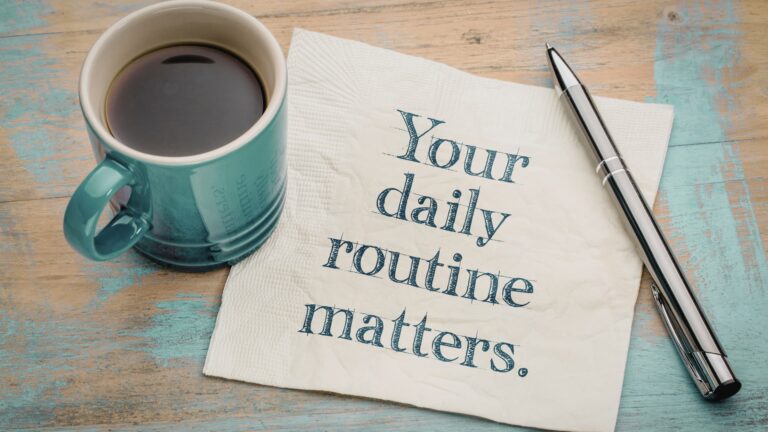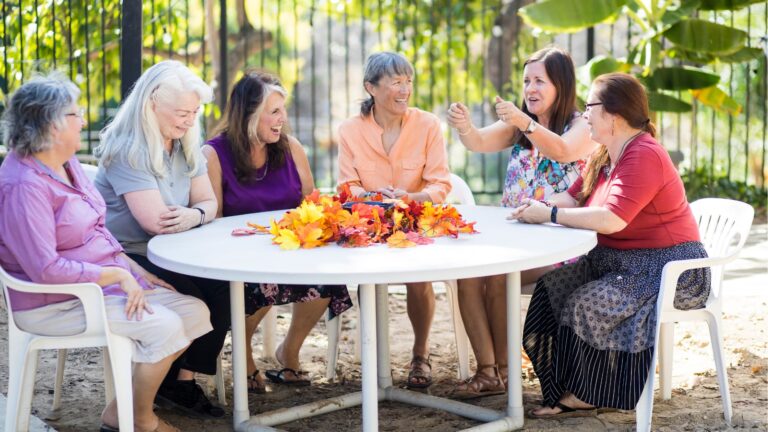More Holistic Approaches to Healing for Widows
Welcome to the second part of our chat on holistic approaches to healing for widows.
In the first part, Melissa and I explored some off-the-beaten-path ways for widows to find comfort and healing during those intense bouts of grief.
But guess what? We’re not done yet!
In this episode, we shine a spotlight on meditation, art therapy, EMDR (Eye Movement Desensitization and Reprocessing), writing therapy, and the nurturing power of spirituality. Think of these practices as your personal guiding stars on the journey to healing, helping you grow and transform along the way.
As we navigate these uncharted waters, we encourage you to think of these holistic modalities with an open heart and an open mind. Healing is unique to everyone, and these methods can offer you valuable tools for self-discovery and self-care, free from judgment or external influence.
Even though these methods are unconventional, it doesn’t mean they’re any less effective in helping widows find healing and relief from grief and pain.
Key topics in this episode include:
- Why meditation isn’t what you think it is
- The therapeutic benefits of EMDR, art therapy, and writing as a means of expression and healing
- The role of spirituality in finding meaning during times of profound loss
As we continue our discussion into holistic healing, remember, it’s all about you and your well-being. Let’s explore these unique methods together and see what resonates with you.
No judgment here, just a helping hand on your path to feeling better.
Listen to the Full Episode
Links + Resources From This Episode
- EMDR Therapy
- Episode 36 with Linda Shanti McCabe on using art to heal
- Melissa’s memoir: Filled With Gold: A Widow’s Story
- Kim’s story “The Promise” in Chicken Soup for the Soul: The Miracle of Love
- The Universe Is Talking to You: Tap into Signs & Synchronicity to Reveal Magical Moments Every Day
- Kim’s article How Would You Handle a Death Sentence?
Episode Transcript
Melissa: Hi. Melissa here, and I’m so glad you’re back with us at the Widow Squad Podcast for the second part of our chat on holistic healing for widows. Last week, we began to explore some truly impactful ways to support our well-being and recovery. Today, we’re going to dive deeper, share some st ories, and maybe even discover some new methods that might resonate with you.
So grab your favorite cup of tea, get cozy, and let’s continue this journey together.
Here we go.
Dispelling Meditation Myths: It’s Not What You Think
Kim: When I think back to before I was widowed, I was just kind of bee bopping along in life. Everything’s good. Right? You’ve got your husband, your family. Everything’s great. You’re going to baseball practice and doing all these things. Well, I didn’t know about any of this stuff before that because I didn’t need to. I wasn’t grieving. I wasn’t in pain.
None of these things were happening. I think the main point that we’re trying to make is we didn’t know this stuff before either before we became widows.
We’re bringing this to your attention because these are some really amazing ways to feel not better about your situation that you’re a widow, just better in your body. We’ve talked before about scrunching your shoulders and being hunched over all the time when you’re grieving. You just need things to help you feel better.
One thing won’t fix it. Two things won’t fix it. These are practices like we talk about all the time. You have to practice these things. There is really no end date or destination.
You’re just practicing it. But it’s so amazing to me that there’s all these options for you to choose from.
Melissa: And there’s stuff that we don’t even know about. There are things we don’t have enough time to touch on.
But, I think the goal, at least for me, in widowhood is I felt so bad. Emotionally, physically bad. Spiritually bad. What could I do to make myself feel better in one of those aspects of my life? Or maybe what’s one thing I could do that might touch on all three of those aspects?
I was always curious. I wouldn’t announce on the rooftops, “hey, I’m gonna go do some EFT tapping.” I would just do these things. Sometimes they worked or sometimes they only worked for a little while, and then I would do something else. But it was just curious and trying to make myself feel better.
Kim: I think it’s important to try things more than once. I know in the early days of widowhood, I was pissed. Right? Just really, really angry. You could’ve told me anything that would make me feel better. I’d be like, “No. It won’t. Thanks anyway. Bye now. I’m not listening to you.”
I would just recommend coming back to it again. At some point, if something didn’t work in the beginning, maybe some time has passed, and you could pick it up again or try it again. Not everything works for whatever stages you are in your life right now.
It’s like meditation. That’s the big thing. Right? Mindfulness and meditation. Everybody should be meditating. Well, what do people picture when you think of meditation? You’ve got a mat on the floor. You’re sitting cross-legged. The Patchouli candles and incense are going. Someone’s banging a drum off in the distance. You have this unrealistic expectation of what meditation is supposed to be.
It’s whatever you make it. It’s whatever you want it to be. Right? So, I’m not gonna sit. I can’t. I haven’t yet sat in my chair and meditated for a full five minutes, okay? I just don’t. I will try. I keep trying. I’m not not meditating. But I don’t sit down every morning and do this.
I would love to have a schedule where that’s what I did, but it’s just not working out for me right now. But I still try moments of meditation. I think sometimes people think of meditation as an alternative grief therapy and they’re like, “yeah, that’s not me. I can’t do that.” It’s not what you think it looks like, because it can be whatever it looks like for you. You can make it whatever you want to be.
Melissa: It could be you lying on a bed. You know? It could just be whatever you need it to be. Be in a relaxing position.
Kim: That’s it. I have a Zen station on my SiriusXM app, that to me is meditation. I listen to that for five minutes in the morning. That’s my meditation. Listening to my Zen music, listening to white noise as you go to sleep. That could be considered a meditation for you. The idea is you focus on your breathing and try not to let your thoughts control you, which is easier said than done.
I don’t think we need to go too deep into meditation. There are lots of apps for meditation. But just the point being you hear about meditation all the time, and it’s not something that you have to ignore. You could embrace it, just not the way you think it’s supposed to look because I don’t think anybody does meditation the way they think it’s supposed to be done.
Melissa: No. Like, I can’t sit cross-legged. My legs will fall asleep. My meditation is laying down with a blankie. And I slip in and out of it, just like with EFT tapping. Sometimes I use it heavily. when I’m going through something, when I need to work through something. And then there will be weeks, months, whatever goes by, and I don’t do it again.
I don’t have a regular practice. Maybe it would be better if I did, but I’m going to write my own prescriptions. You know? I’m gonna write one for myself.
I encourage folks to do that. Everybody should do that for themselves. If something isn’t working, don’t do it.
Kim: Right. Then don’t do it.
Melissa: Find something else.
Kim: Absolutely. I have workbooks in my office where I sit in the morning on my chair. And some weeks, I can sit down and write, whether it’s a gratitude list or journaling, whatever. Every day, I could do it for two weeks. I’ll be like, oh wow, this is great. I got a routine. And then something happens, and it messes up my routine.
And then I don’t do it again. And then I feel bad like, oh, I didn’t do that thing this morning that I was doing for two weeks in a row. And then I make it mean that something’s wrong with me. Well, it’s not. It just didn’t work that day. Maybe it doesn’t work that week. Maybe we’re going on vacation.
I put a lot of pressure on myself to make things work the same way all the time and do it consistently day by day and week by week, but it just doesn’t work that way. Life doesn’t work that way.
Melissa: No. It doesn’t. I mean, it’d be great if we could be regimented and, like, at 8:05, I do this, and at 8:15 I do that. That’s not how life works.
EMDR Therapy for Traumatic Life Experiences
Kim: The other alternative therapy I wanted to talk about, because I think you’ve done this, and this fascinates me, too, is called EMDR therapy. This is eye movement desensitization and reprocessing, EMDR, therapy that helps people heal from traumatic life experiences.
I’m gonna just read a quick definition here, Melissa, and you did do EMDR, correct?
Melissa: Yes. I did once.
Kim: So let me just read what it says happens in an EMDR session. During the session, the therapist asks you to focus on certain memories or thoughts associated with an especially painful event while following a moving object with your eyes. The therapist will aid you in recalling upsetting memories while they move from one side of your body to the other in a set pattern. Each EMDR session unblocks the emotional processes that distress has suspended or obstructed. The therapist will repeat this EMDR process until you no longer feel negative reactions to this disturbing memory.
This fascinates me.
Melissa: It is fascinating. It is. When I was in counseling, I read a little bit about it, and my therapist, who was certified in EMDR, mentioned it. That was one of her modalities, One of the tools in her toolbox.
I was getting activated by thinking about this traumatic memory. This traumatic event was just really keeping me stuck.
Kim: So let me ask you, if you don’t mind sharing, what was the specific memory that you had to recall that she was moving the objects around for you?
Melissa: Dave died suddenly, and I found him in our bed. I did CPR and all that.
Kim: So when she’s asking you to recall the memory, that’s what you’re focusing on at that point?
Melissa: Yeah. She’s prompting me. She’s asking me questions. But I’m just following her fingers. Her fingers that are at my eye level, and they’re just going side by side by side. And my head is still, and my eyes are following her fingers. And then she’s asking me to talk about that event.
If I started to get upset or whatever, she would just she would stop. She would also tap on my knee. So, she’s very close to me. She would tap on my knee in rhythm. I don’t know what the brain’s doing, but for whatever reason, with my eyes going back and forth, and then this tapping sensation on my leg, I was able to talk about it and process it in a way that I wasn’t activated. I don’t like to use the word triggered. It was just an easier way for me to process and remember that event and let that flow through.
Kim: Okay. So that’s desensitization and reprocessing. Tapping on your knee is the desensitization and then reprocessing as you’re moving your eyes. Is she then telling you to think about this event in a different way, or is she just letting you talk?
Melissa: She’s prompting me and asking me questions. She’s saying, “tell me about this,” and “tell me about that.” And then she would notice if my senses were heightened. And then, she would say, “do you want to stop?”
It was really interesting. I felt like that one session was enough for me. I felt calmer, I guess. I’m not a scientist or a psychologist, so I don’t understand the exact workings of it. I just know that it was super helpful.
Kim: Well, I remember when Nicholas, my oldest son, was going through all his issues in high school and he was getting in all kinds of trouble. And at one point, he had a therapist who said that she specialized in EMDR.
Now we had gone to four or five therapists by this point, okay? So we go to this lady, and in one of our conversations, she said she has this EMDR certification. I was like, “oh my gosh. Let’s try this!” Because Mark fell down the stairs. Before he died, he fell down the stairs. We had to take him to ICU, and that’s a long story, but that was the beginning of the end for him after he fell down those stairs.
But, anyway, Nicholas heard that fall. He heard his father fall. We were upstairs in our bedrooms and he heard a thump. So in my mind, I’m thinking that’s a very traumatic experience. When he came to get me because he heard the fall, we went to the basement, turned on the light and his dad was lying at the bottom of the stairs. That’s very traumatic.
So the therapist says, “well, I can do EMDR on him.”
I’m like, “great. Let’s do it.”
Long story short, she didn’t do it. That’s a whole other conversation for another day. But I was so disappointed because I really wanted him to do this EMDR. I really thought that was going to be a huge breakthrough for him, and she never did it.
I think it’s fascinating. I don’t think I had a specific traumatic event for me. Like, my husband died over the course of a year. Right? I never did it for myself, but I think it could be helpful for your children to process some of those memories and difficulties.
Melissa: If you’re shut down and traditional talk therapy is not your jam, this might help. It felt to me like a really safe way to process.
It was just a really helpful way to talk through a traumatic event and process it, where my body isn’t in this heightened state of anxiety and stress.
Kim: That’s what I think the whole premise is. That when you move through this desensitization process and you reprocess those thoughts and memories, they no longer cause you distress. I don’t know what the recommended number of times to go is though. That would be between you and an EMDR therapist. But I definitely think it’s worth looking into if there’s that traumatic event you keep replaying in your mind.
Melissa: It’s really up to you. You’re your own advocate.
For me, it felt good. It felt like I’ve got a handle on this. If I felt like I needed more support that way, I could totally just make another appointment. I got to the point where I can think about this and talk about this without blocking it. Because I was really blocking it. I was, like, not remembering things.
Kim: We block a lot of things.
Melissa: But it’s still there. It’s still in my brain. It’s still in my body. You know?
Kim: It’s there. That painful stuff that we don’t want to face. It’s physically painful, and mentally and emotionally painful. That pain is intense. And a lot of us just try to shut it down and move it off to the side to deal with at a later date. And you know that’s not how it works. So that’s why any of these alternative therapies is a huge boon for widows because it gets you through that intense pain. It helps you through it, so you’re not avoiding that pain because you can’t avoid it. It just makes everything worse when you try to avoid it.
Melissa: Yeah. Oh my gosh. For sure.
Exploring Holistic Approaches to Healing Through Creative Expression
Kim: I know we’ve talked before too about creative expression and art therapy and creative outlets, like music therapy. I know that you’ve talked before about the choir that you were singing in after Dave died. And then we had Linda Shanti McCabe on the podcast in episode 36. She’s a fellow widow, an author, and an expressive art therapist. In that episode, she shared about her experience of using art to heal her grief. There are a lot of different ways you can use creative expression to deal with grief.
I’m just curious, other than your choir and your tap-dancing class that you took after Dave died, what other creative ways did you deal with your grief?
I know you wrote a memoir, so writing must be a great outlet for you.
Melissa: I have I have to give a shout out to Linda Shanti McCabe. I did one of her vision collage classes. It was like an afternoon class that she taught virtually, and it was another way to use the creative part of your brain. It was just really fun. It’s almost like vision boarding, but without words. It was just so cool. I love her.
Kim: Absolutely agree. Go back and listen to episode 36. Linda always clarifies that you’re creative. You are. Don’t tell yourself you’re not creative. You are. In whatever way that means.
Melissa: I can write, but I can’t draw. I can do stick figures.
Kim: But the writing part, so you wrote a memoir.
Melissa: I did.
Kim: That must have been therapeutic on some level for you?
Melissa: It was. You know, when I think about it, it was like a year and a half long period that I was right in that act of writing and remembering. There were a lot of things that I just didn’t remember or was not dealing with, and a lot of that came out as I was working through the book.
I just wanted to get my story out. Because it sounded so crazy when you’re telling somebody, like, “here’s what happened.” You know? When you would say it out loud, people would be like, “oh my gosh, I can’t believe that happened. You should write a book.”
So I did. It’s out and I’m glad I did it. The act of writing it, telling the stories, conjuring up those feelings and processing them, and then promoting the book and reading excerpts out loud all helped.
Kim: It’s an excellent memoir, by the way. It was very well written.
Melissa: I don’t know, Kim. There were no books. It was so hard to find widows’ stories at that time. I know now with self-publishing people are like, “yeah. I’m gonna share my story.”
There are so many awesome books written by widows out these days. But at the time, 13 years ago, there was nothing. I was like, well, I just I want to write this so that somebody could pick it up and know that they’re not the only one who’s experienced this.
Kim: Absolutely. And you don’t have to write a memoir, and you don’t have to get it published. You could still write something. Even if you wrote a living history for your children or for future generations or whatever. We don’t need to get caught up in writing a full-length book or even getting your writing published.
I think that writing is therapeutic. That can be journaling or actually writing a book or writing articles. I’ve written articles.
Melissa: Yeah. You’re a successful blogger. You’ve been published in Chicken Soup for the Soul and all the things. So that must have been a therapeutic experience for you, too.
Kim: It is very therapeutic. Like you just said, it helps you make sense of the senseless. Because you’re writing about your story. Now other people take from it whatever they take from it, whatever their interpretation is of your story. But for yourself, you’re trying to make sense of things that happened.
In my case, my husband was given a death sentence. He had glioblastoma, which is a terminal brain cancer. When he was diagnosed he was given 12 to 15 months to live. One of the most popular articles I’ve written was about how you would handle a death sentence.
I wrote about how Mark handled his death sentence and how I, standing back as the person watching him handle this death sentence, handled it. Right? I was just trying to make sense of how somebody, who’s being told they’re gonna die in 12 to 15 months, doesn’t completely fall apart. Like, I don’t understand that. I still don’t. I’ve written several times about my husband and the way he handled things, and I still don’t understand it. I really don’t.
If I was given a death sentence, I’m not sure I would have handled that same way he did. You know? I just don’t. It was amazing. So I had to try to make sense of it. And I’m still trying to make sense of that.
Melissa: I have to imagine somebody whose husband has glioblastoma and has that death sentence and comes across your article and reads it is like, oh my god. She’s in my head. She knows about my experience. She knows what’s going on. I mean, it’s amazing that you can use your craft, and you’re sharing it with the world. You’re helping other people understand this painful, painful experience.
Kim: Because we all have painful experiences. Dave died suddenly. Mark had terminal brain cancer. Other spouses die from heart attacks or COVID or whatever the case may be. But when I’m writing about glioblastoma, and I get a response from somebody whose husband had glioblastoma, we have an automatic connection.
And I’m like, I don’t even know this person, but I stop breathing when I get the email that says, “my husband had glioblastoma.” I can’t breathe even now 10 years later. I still stop breathing momentarily when I hear that word.
So making those connections with people and getting your words out there in the universe is hugely healing for not only you, but the other people going through the same experience or a similar experience.
Melissa: It’s funny. I never considered myself a writer. I don’t know if you did. I didn’t go to college for it. But I think everybody has a story. Everybody has something to share, has an experience to share, and I think it’s cool that we took that leap and says, “I’m gonna put this on paper and share it.” It’s scary.
Kim: it IS scary!
Melissa: It’s scary sharing your personal life, your personal stories. I mean, like this podcast. We’re laying it all out there.
Kim: Look how far we’ve come. You know? If you says 10 years ago, “you’re gonna have a podcast someday and tell people all about everything that happened to you, I would’ve been like, “Nope. I aint talking about it.”
But you do.
It’s taking those leaps of faith. Exploring those alternative therapies you didn’t think were going work for you. It’s just trying whatever it takes to make you feel a little bit better. Whatever gives you that little sliver of sunlight in your life helps you keep taking those forward steps. It’s really, really hard to see the light at the end of that tunnel. You got to keep digging your way up.
Melissa: But there is light. There is light at the end of that tunnel.
Kim: Yeah. There’s definitely light. And, you know, we talk a lot about spirituality and signs and angels and all these kinds of things. And that can play a role in your in your healing too. Some people will come back at me and be like, “signs aren’t real. You’re making it up in your head.” And I say that’s fine, but if it makes me feel better, that’s okay too.
Not everybody has a spiritual feeling about things. Maybe you do, maybe you don’t. But I know that’s helped me. My spiritual beliefs have helped me in my grief because I believe that my husband is still with me. People can think I’m crazy. I don’t care at this point. I really don’t. And I tell people without an ounce of shame or regret or anything that I think my husband is still with me.
And I’m a remarried widow. My current husband knows that I believe my husband’s with me. So there’s no secret. I get way too many signs to think any differently.
I remember one time I got an email from a widow who read a blog post I’d written about signs, and she was very distraught. She said she used to get signs from her husband in the beginning, and she just hadn’t had any signs lately. She said he must be mad at her or something because she hadn’t sensed his presence.
I just replied in very simplistic terms, he’s with you if you believe he is.
That’s it.
Melissa: If it gives you comfort, then go with it.
Kim: Yeah. Go with it. So, she was thinking, I haven’t seen any signs. Well, the other thing I like is this quote that says, “when you ask the Universe to send you signs, believe what shows up.” Believe what shows up. We think a certain thing is going to be that sign. Maybe it’s not. Maybe there was another sign that you missed or whatever.
And that’s what I was trying to explain to this widow that, well, if you don’t think he’s with you, then you’re blocking the opportunity to open your mind that he is. So we just had this conversation over email of, if you believe he’s with you, he is. Don’t make it mean something that it’s not, and, you know, kind of relax into it.
She wrote back, and she says, “I think I understand what you’re saying.” And she felt a little bit better, but I was thinking, wouldn’t it be nice if we had, like, a plane going across the sky with one of those sky notes saying, “hi. This is your dead husband sending you a sign.”
That’s not how it works.
Melissa: Right. Yeah. I know. We read a book in the Widow Squad book club called The Universe is Talking to You.
And it’s just basically about recognizing that there are signs all over the place. You just may not be seeing those signs. It had all these different exercises that you could do to kind of attune yourself to seeing signs.
Kim: Do you remember any of those exercises?
Melissa: Oh, gosh.
Kim: I’m putting you on the spot here, but I didn’t read that book in the book club. But I’m just curious if you can think of any.
Melissa: I don’t remember. It was months ago. But I do feel like Dave is with me. I talk to him, and he comes to me in song.
There are ways to train yourself to see signs. There are exercises. There are books. There are things that you can do to really train yourself to recognize the signs.
Kim: So if you’re doing these exercises, you’re opening up your brain to possibility. I think the first step is just opening up the possibility.
My older son was adamantly against me seeing signs. He’s thinking absolutely untrue. Did not happen. No way. Not possible. Blah blah blah. And he was young, but he’s 20 now. He’ll be 21 soon.
He sees signs now. So, he moved from not happening, I don’t believe you, to him sending me texts when he sees signs. It just takes some time. If something doesn’t work today, try it again tomorrow. Try it again next week, next year, whatever.
You know, he was against seeing signs in the beginning. He’s not against it now. He had to come back around and kind of rethink that. But if you close your mind to it, it’s not never gonna happen. Your mind has to be open.
Melissa: It’s a great book. I want to revisit that book; The Universe is Talking to You. It was cool just to go through some of those exercises. But, you know and what we’re talking about here could be considered unconventional.
Kim: Totally unconventional.
Wrap Up
Melissa: The key is to pick what’s comfortable for you. Whatever speaks to you.
We could go on and on with so many other topics.
But that’s our overview of some paths you can take on your grief journey. Remember, what works for one person may not work for another, and that’s perfectly okay. It’s all about finding what brings you a sense of peace and healing.
If you found this conversation on the Widow Squad podcast helpful or you have your own experiences to share, please connect with us on our website, www.widowsquad.com or our Widow Squad social media.
We’re here to support each other.
Until next time, take care of yourselves and keep exploring the paths that help you heal.







